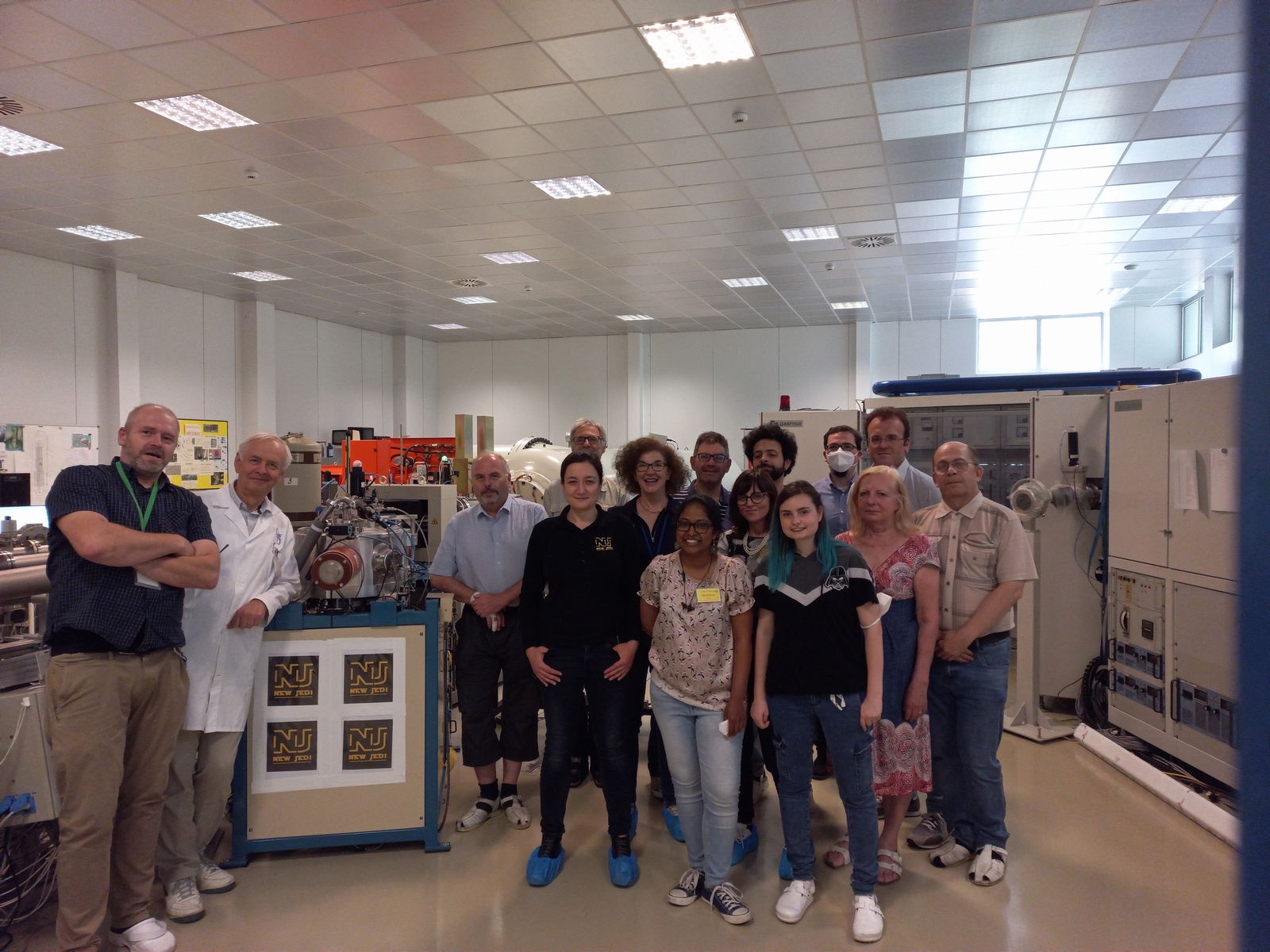
Department of Nuclear Reactions (DNR)
The department conducts fundamental research in the field of nuclear astrophysics and the structure of exotic nuclei, as well as fundamental and applied research with fast neutrons and charged particles. The department collaborates with international laboratories GANIL/France, INFN-LNS/Italy and others.
Research activities basically branch into three directions, they are mutually connected and they add to a general knowledge of nuclear processes and the application of the knowledge.
Research activities can be divided into three main directions, that are ultimately interconnected:
- Fundamental research in nuclear astrophysics and the structure of exotic nuclei
- Research with fast neutrons
- Research with charged particles
Fundamental research in nuclear astrophysics and the structure of exotic nuclei
The formation of all elements and isotopes that surround us and we are made of is the result of processes that occurred or are occurring in the Universe. The Big Bang left behind - apart from a negligible amount of a few light elements - hydrogen and helium. All other elements are basically the products of stars of various sizes, temperatures and generations, supernovae, novae, and neutron star collisions.
While it may seem that the energy of the processes through which elements are formed is immense, from the perspective of nuclear physicist, these energies are small. Often so small that it is very difficult to measure these processes in the laboratory. In the core of the Sun, the average temperature is high, 15 million K, but when converted to the energy of particles (protons and alpha particles), it is about 1 keV (the voltage of 1000 V is able to give particles this energy). However, atomic nuclei, being charged positively, repel each other with electromagnetic force, and to overcome it in a laboratory, we need energies in the order of units of MeV or tens of MeV (million of electron-volts). Stars have enough time - billions of years - and huge amounts of material so they can produce energy using small quantum effect (quantum tunneling) to overcome this barrier. Physicists, on the opposite, have at most a week of time on the accelerator and very small amounts of pure material to reproduce the neuclear reactions in stars.
Nuclear astrophysics research can use (and we do in our institute and collaborations) indirect methods to obtain key information about nuclear reactions at stellar energies. Our primary facility for experiments is the U120M cyclotron, which is part of the CANAM research infrastructure. Internationally, we collaborate primarily with the INFN-LNS laboratory in Italy and the GANIL laboratory in France, to which our research infrastructure SPIRAL-CZ is also linked. At GANIL, we collaborate on a number of other topics, such as studying the structure of exotic nuclei.
The details are available in the tab Research.
Fast neutrons in research
The department operates two fast neutron generators. The generators use accelerated protons and deuterons from the U120M cyclotron to generate neutrons through reactions on Li and Be targets. The generator using the Li target provides neutrons (approximately) with a single energy (variable between 17 and 34 MeV) and a neutron flux of up to 10^9 n/cm²/s. The Be-based target provides a continuous neutron spectrum with a neutron flux of up to 10^11 n/cm²/s. Further development is ongoing, and we expect to achieve even higher neutron fluxes in the near future.
Neutron fields are used to measure the cross-sections of certain isotopes and elements that are utilized in construction materials and technologies for future nuclear facilities. Understanding these cross-sections is crucial for the safety, operation, and decommissioning of such facilities. For these measurements, we use the activation method followed by gamma spectrum analysis.
We also perform neutron measurements and measurements of neutron spectra using the Time-Of-Flight method and a Proton Recoil telescope. Recently, we have developed the ability to measure (using a collimated neutron beam) the energy and type of charged particles produced in a reaction (neutron, charged particle), we have developed a measurements of gamma radiation emitted within milliseconds after incoming bunch of neutrons, and more. These measurements are valuable for understanding the aging and damage of materials in intense neutron fields, where charged particles transform into micro-bubbles of gas and materials become brittle. This is a challenge faced by both current and, especially, future (fusion) reactors.
Intense neutron fields from the p+Be generator are used for testing electronics, measuring material damage, and, for example, evaluating the shielding capabilities of various composites.
The details are available in the tab Research.
Research with charged particles
Research with charged particles is based on the same method used by neutron generators—the activation method followed by gamma spectrum measurement using HPGe detectors. This research primarily utilizes the U120M cyclotron and deuterium beams. Reactions with deuterons are complex to model because many processes are involved, and understanding the cross-sections of these reactions is crucial for future fusion reactors. An example is IFMIF-DONES, a facility under construction that will use deuterons to generate record-intense neutron fields for materials research in future fusion reactors.
Since 2019, research on activation with charged particles has also been conducted in collaboration with the GANIL laboratory in France and the SPIRAL-CZ research infrastructure. This program has successfully expanded to include research on radioisotopes with potential applications in medicine, where we collaborate on the development of various isotopes with teams from GANIL, NANTES, IJCLab, France. An important component of our efforts is the partnership and collaboration with the Department of Radiopharmaceuticals, which has outstanding facilities, expertise, and a rich history in this field.
The details are available in the tab Research.

Photo: A joint experiment at the Tandetron facility of the NPI, the New JEDI project, was attended by workers from the National Institute of Nuclear Physics, GANIL/France, INFN-LNS/Italy.

